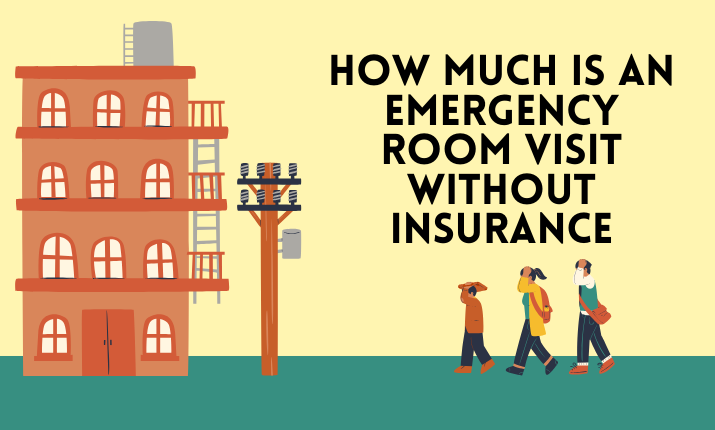Introduction
Accidents or illnesses can strike at any moment, and the costs associated with emergency room visits without insurance coverage can burden many individuals. This article on room visit without insurance seeks to illuminate these financial repercussions by exploring what an unexpected ER visit might entail for individuals without safety net coverage such as insurance.
Understanding the Basics
Before considering costs, defining an emergency is critical. Emergencies require immediate medical assistance to avoid serious harm to an individual’s health.
Insurance Provides Financial Cushion
For Medical Costs Health insurance acts as a financial safeguard, covering some of the costs associated with medical treatments or emergency room visits that otherwise would fall entirely upon an individual without coverage. Without it, these expenses must be shouldered entirely on one person’s shoulders.
Breaking Down the Costs
Medical Evaluation and Triage On arrival to an emergency room, patients are usually triaged to determine the severity of their condition and incur an initial assessment fee that differs depending on which healthcare facility is providing it.
Diagnostic Tests and Procedures
Emergency room visits typically involve numerous diagnostic tests and procedures, including blood work, X-rays, and more advanced imaging such as CT scans or MRIs – these costs can add significantly to overall medical bills.
Physician and Nursing Care
Emergency room physicians and nurses offer invaluable medical assistance during a visit, but their expertise typically comes at a greater expense in an ER setting than regular clinic visits.
Medication and Treatments
Prescribed medication and treatments administered during a visit are additional expenses to consider, with prices fluctuating depending on their type and dosage requirements.
Hospitals charge facility fees when using their emergency room and associated resources, often accounting for a substantial portion of overall costs.
Depending upon the nature of an emergency, additional services such as wound care, splinting, or casting may be necessary and incur extra charges.
Seek Financial Assistance
Charity Care and Financial Aid
Many hospitals provide charity care programs or financial assistance programs for patients unable to cover the full costs associated with medical treatment, so those in need must make inquiries into these options and submit the necessary documentation.
Negotiating Your Bill
Patients without health insurance should investigate negotiating their bill with the hospital’s billing department, which may offer an affordable payment plan or reduced rates.
Consider All Options
While emergency room visits are sometimes essential for medical emergencies, other solutions may be more cost-effective for non-life-threatening ailments.
Urgent Care Centers
Urgent care centers offer timely medical assistance for non-life threatening ailments that require urgent attention but don’t pose an immediate danger, often at significantly reduced fees compared to emergency rooms, making them a more economical alternative for those without health insurance coverage.
Community health clinics provide various medical services at an income-based sliding fee scale. This enables essential medical care services like checkups, vaccinations, and treatment of minor illnesses/injuries at reduced costs.
Telemedicine Services
In recent years, Telemedicine has quickly become a cost-effective, convenient option for non-emergency medical consultations. Many healthcare providers provide virtual appointments so individuals can seek medical advice without leaving home.
Conclusion
Without insurance, an emergency room visit can become financially devastating. Understanding all costs involved and exploring any available financial assistance or negotiation solutions are paramount for individuals facing this circumstance.
FAQs
1. Can I negotiate the cost of my emergency room visit without health insurance?
It is possible to arrange your bill with the hospital’s billing department; they may offer reduced rates or work out payment plans that work better for you.
2. What constitutes a medical emergency?
A medical emergency requires immediate medical intervention to avoid serious harm to an individual’s health.
3. Are Financial Assistance Programs Available for Individuals Without Health Insurance Plans?
Many hospitals provide charitable care programs or financial aid for patients unable to cover the full costs associated with their healthcare costs.
4. How can I apply for charity care or financial aid?
To apply for charity care or financial assistance at a hospital, contact their billing department and submit all appropriate documentation.
5. What are the facility fees associated with an emergency room visit?
Facility fees cover the costs of using the hospital emergency room and associated resources and can constitute a significant part of overall visit costs.

